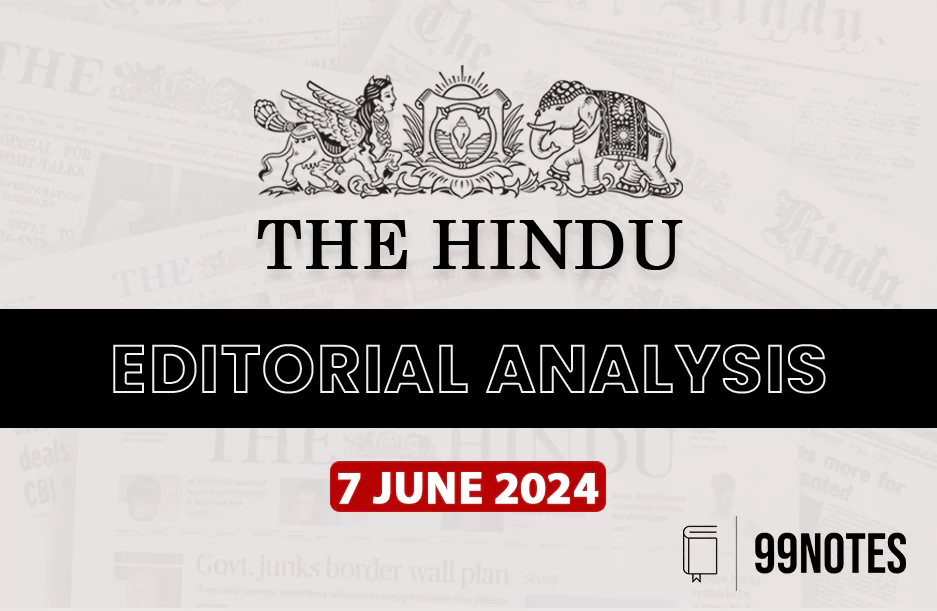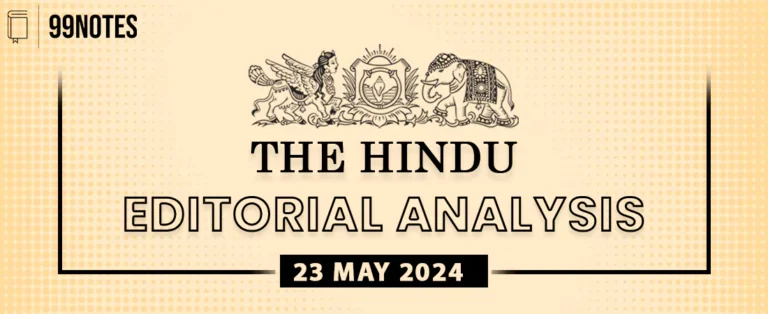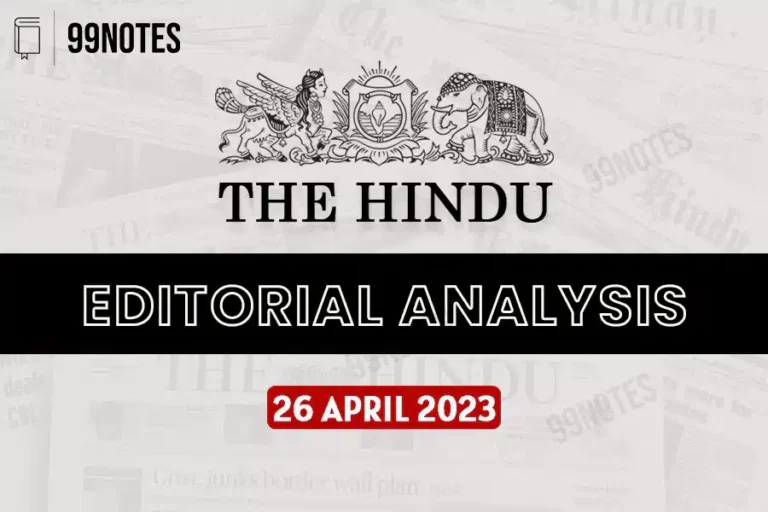7 June 2024 : The Hindu Editorial Analysis
1. Health regulations need a base to top approach
| Topic: GS2 – Social Justice – Health |
| Context |
|
Introduction:
- A devastating fire incident in a private neonatal care nursing home in New Delhi raised concerns about health-care regulations.
- The blame game ensued among political parties, overshadowing the systemic failures in health-care regulations.
Challenges in Health-care Regulation:
- India’s health-care system faces challenges in implementing excessive and unrealistic regulations across states.
- The Clinical Establishments (Registration and Regulation) Act, 2010, remains unadopted due to impractical provisions.
- Indian Public Health Standards (IPHS) have low compliance rates, indicating unrealistic standards.
Mixed Health-care System:
- India’s health-care system comprises both government and private sectors, with private facilities catering to a significant portion of health services.
- Despite public perception, private facilities often fulfil health needs more effectively in certain states like Maharashtra and Kerala.
Unfair Regulation Practices:
- Private health-care facilities face disproportionate scrutiny and enforcement compared to government facilities.
- Instances of differing treatment in licensing suspension highlight the need for equitable regulation.
- Facility owners cite delays in approval processes, hindering timely renewal and compliance.
- Slow bureaucratic processes undermine the effectiveness of regulations.
Promoting Affordable Care:
- Single doctor clinics and small nursing homes play a crucial role in providing accessible and affordable health services.
- There is a need for supportive regulations to keep health-care costs low and ensure affordability.
Recommendations for Regulatory Reform:
- Simplify regulations to ensure practicality and feasibility.
- Tailor regulations to suit different types of health-care facilities, avoiding a one-size-fits-all approach.
- Involve stakeholders, including doctors’ associations and community members, in the formulation of regulations.
- Mitigate political sensationalism and media bias to prevent mistrust and violence against health-care providers.
Focus on Primary-care Providers:
- Promote single doctor clinics and smaller health-care facilities to enhance primary care delivery.
- Support these providers with subsidies and incentives to maintain affordability and accessibility.
Addressing Root Causes:
- Address systemic failures by simplifying regulations and ensuring timely decisions on licensing.
- Develop regulations collaboratively with stakeholders to ensure fairness and effectiveness.
Conclusion:
- The fire tragedy in Delhi underscores the need for practical and implementable health-care regulations.
- By promoting primary-care providers and streamlining regulatory processes, India can achieve people-centric, accessible, and quality health services as outlined in the National Health Policy, 2017.
| Healthcare Regulation in India: |
|
Challenges in Healthcare Regulation in India: Fragmented Regulatory Framework:
Way Forward:
|
| PYQ: Public health system has limitations in providing universal health coverage. Do you think that the private sector could help in bridging the gap? What other viable alternatives would you suggest? (200 words/12.5m) (UPSC CSE (M) GS-2 2015) |
| Practice Question: Discuss the systemic failures in health-care regulations in India. Evaluate the challenges in implementing regulations and suggest reforms to promote affordable and accessible healthcare. (250 Words /15 marks) |
(Source – The Hindu, International Edition – Page No. – 4)





